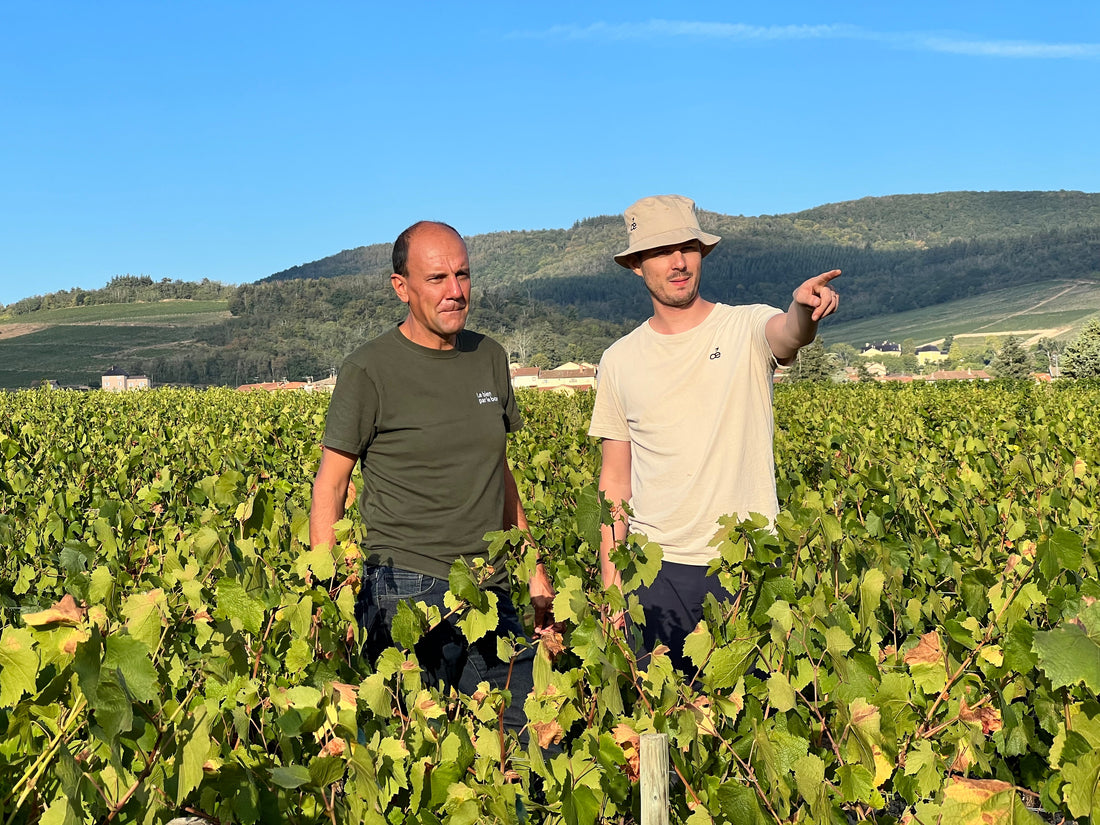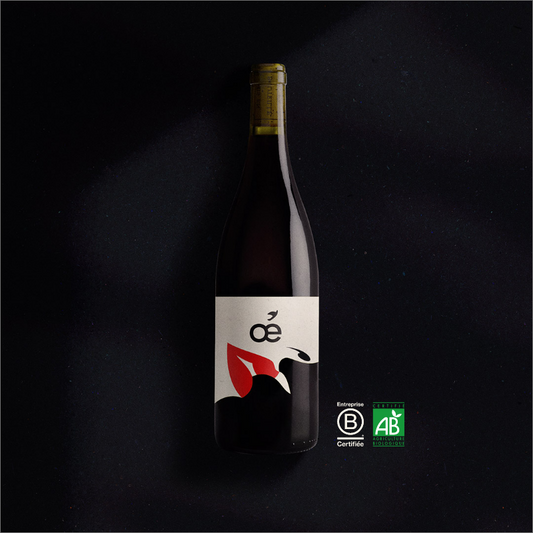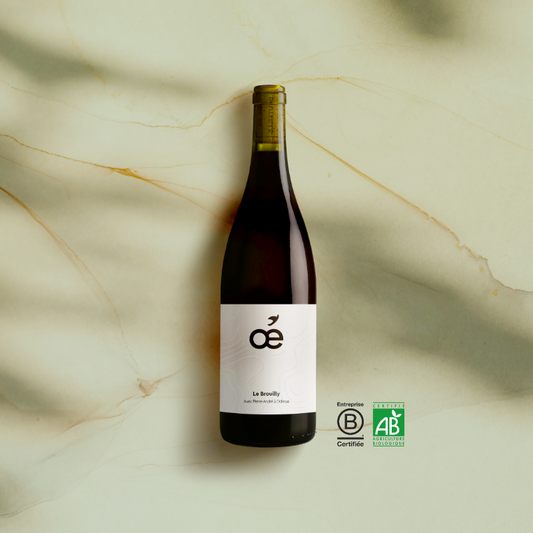More than a year ago, we launched our Oé Program for Biodiversity . This project responded to our desire to go as far as possible in our approach to produce good organic wine , committed, favorable to biodiversity and not harmful to the environment. Today, our program is more topical than ever. And yes, biodiversity needs us. She helps us every day, so we send the favor back to her. At Oé, we like to cultivate, to cultivate ourselves to nourish our minds and raise awareness in our community of our mission to do good with good . Let's go for an overview of biodiversity , its role for our planet and the dangers that await it.
What is biodiversity ?
The biodiversity. The word seems simple, there is bio and diversity . And when we talk about organic , what do we really mean? Bio comes from the ancient Greek bios, which means life . Biodiversity is life, in all its diversity . It is the natural heritage of our planet , what is called the living fabric of our world. It's beautiful isn't it? Normal, it's organic.
When we talk about biodiversity , we are talking about three very specific levels:
- Specific diversity , that is to say the diversity of species, mammals, insects, batrachians, plants, trees , in short all the fauna and flora of our planet,
- Genetic diversity is the level of gene varieties in each species, which makes each individual of its species unique,
- Ecosystem diversity represents the multitude of living environments and landscapes that harbor the other two levels of diversity: oceans, forests, swamps, deserts, etc.
Biodiversity is all there is, it is all life forms on earth such as plants, animals, bacteria and their habitats and interactions. Yes, the interaction between species is very important. The different levels of biodiversity form an ecosystem , ie the set of living beings that live in an environment and that interact with each other. It is the different interactions within an ecosystem that guarantee its balance.

The role of biodiversity in our lives
The benefits of biodiversity
Biodiversity is full of benefits for our planet. It offers us oxygen , which is produced by the oceans via plankton and by forests thanks to photosynthesis. Photosynthesis is the particularity that certain organisms have of releasing oxygen thanks to the energy of the sun . Nature is well done, don't you think?
Biodiversity supplies us with:
- In air and food (with breeding and agriculture),
- In raw materials such as wood or cotton,
- In therapeutic care thanks to plants .
Biodiversity is essential to the quality of life of the human species. And it's good to remember that!
Biodiversity at the service of the planet
The interactions of different living beings form the proper functioning of an ecosystem. One thinks, for example, of the pollination of crops by pollinating insects such as bees, which carry pollen from flowers to flowers and give us fruits and vegetables such as grapes and therefore good organic wine . We know that more than 70% of crops are made possible thanks to the action of insects, incredible, isn't it?

You want to know more about the role of bees in biodiversity, we tell you everything here!
Soil fertility is maintained thanks to fungi and bacteria that recycle organic matter and facilitate the assimilation of nutrients by plants. The regulation of species including certain crop pests is made possible thanks to the presence of their natural predators. When Mufasa tells Simba about the cycle of life to explain how the world works, he couldn't have done it better. And yes, all of this forms a very well-established system where everyone has their place and their importance.
Biodiversity and climate change
Biodiversity helps us fight climate change and limit its effects. In wetlands , plants participate in the natural purification of water and the supply of fresh water thanks to their ability to capture nitrogen, giving us access to drinking water . Terrestrial and maritime biodiversity protects us from floods, cyclones and erosion.
If you want to know more about the role of wetlands for biodiversity, it's here!
Trees, oceans and soil organic matter absorb half of the carbon dioxide emissions we produce. Biodiversity is an ally in mitigating the effects of climate change which contributes to improving air and water quality. Working with nature offers solutions that are inexpensive, quick to apply and accessible to the poorest populations. Such as the protection and restoration of land, forests and soils, the revegetation of the coasts or the improvement of the management of the plains.

Biodiversity is also a victim of climate change . Rainfall and pollution cause an imbalance in ecosystems and the disappearance of species. The means that we put in place can harm biodiversity , such as wind turbines that threaten the flight of our friends the birds.
When biodiversity is in danger, we must act to protect it!
The overconsumption of humans pushes farmers and breeders to make intensive productions that harm the planet. Like the use of chemical fertilizers that harm the quality of crops and our health. Overexploitation , deforestation, destruction of soils and ecosystems and disappearance of species and their habitats... So many words that scare people and that we would like to see changed. Nothing is too late if everyone does their part!
The disappearance of one or more species can disrupt its entire ecosystem and the balance established by nature then disappears with it. To help you picture the problem, let's imagine that every ecosystem on earth is an airplane flying through the sky. Just like an ecosystem , an airplane needs a set of elements to function. If a reactor no longer works, the other can take over, if the pilot is unconscious, the co-pilot can take care of the flight. But if the other reactor no longer works, if the co-pilot is no longer able to take care of the flight and if the heart of the machine, the engine, no longer works, the system loses its balance. The plane falls and can cause irreparable damage to the ground, where we live. Do you understand where we are coming from? Well, it's the same thing for biodiversity .
For example, if pollinators disappear, we lose part of our crops: more vegetables, more fruit, more wine.
Many species are considered endangered. From large mammals like the panda to small birds, insects and microorganisms. Global warming disrupts the living conditions of plankton . Deforestation deprives us of a good ally to reduce carbon in the air. Overexploitation leads to the depletion of the soil and our resources. It sounds scary but there is still room for change.

Examples exist to preserve the biodiversity. By working with nature, we ensure a good balance in our ecosystems and this balance protects us against climate change while ensuring the quality of our air, our water and our access to various resources. As the old adage goes: alone we go fast, together we go further! We can slow down the machine and take the time to take care of our beautiful biodiversity in order to ensure the longevity and prosperity of our planet. To limit the depletion of resources, we can rethink our consumption and production methods.
Solutions to safeguard biodiversity
We owe the invention of the term “biological diversity” to Raymond F. Dasmann in 1968. The contraction of the term “ biodiversity ” ( biodiversity ) was used for the first time in 1986 by Walter G. Rosen. It was during the 1992 Earth Summit in Rio that the protection and restoration of biodiversity was considered an integral part of sustainable development. Several organizations such as UNEP and WWF are dedicated to the protection of nature.
Solutions exist to reverse the balance:
- We can change our current models and opt for sustainable and ecological modes of consumption and production,
- Limit deforestation and reduce pollution,
- Work for the protection and the return of biodiversity and promote organic farming. Certifications exist such as the Organic Agriculture (AB), Ecocert, and Nature & Progrès label , which guide and recognize company initiatives that help biodiversity.
Oé is committed to biodiversity
A year ago, Oé embarked on a new approach, the “ Oé Program for Biodiversity” . Concretely, what does this program consist of? W e constantly support the awareness of our winegrowers to the challenges of biodiversity . We analyze the existing of our vines in terms of biodiversity and we give advice to improve it with the help of the EcoFarms label and the Miimosa platform!
Our winegrowers are more than ever concerned with the protection of biodiversity and work to facilitate its integration into the vines : nesting boxes for bats, hives for bees , planting of hedges and trees in the grape varieties. All this with the aim of offering good organic wine in total agreement with our commitments. Like our winegrowers Franck and Véronique in Pujols , who work every day to develop biodiversity in their vines. As part of the Oé program for biodiversity, we partnered with Ecofarms and Miimosa to help Franck and Véronique in their projects.

At Oé, we want to maintain consistency across the board. And that's why we work with very committed winegrowers and bottle our wines in the most responsible bottles possible. All of our products are organic, AB certified.
- Our natural cork comes from an FSC forest in Portugal,
- Our label is recycled and recyclable, not bleached with chlorine and affixed with a water-soluble glue,
- Our wines are naturally pesticide-free, from organic viticulture and respectful of the environment , bottled 40km from Lyon,
- Our bottles are recycled and come from the deposit that you can deposit with your merchant throughout France and which will then be received and washed by one of our partners. You can find information here on the shops that practice the deposit.
At Oé, we are sure that each initiative counts to change the world and we are proud to share this one with you and to promote organic farming that cares about biodiversity and our future.





